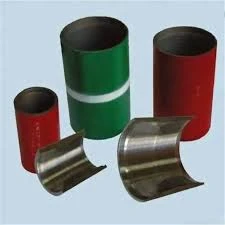- Afrikaans
- Albanian
- Amharic
- Arabic
- Armenian
- Azerbaijani
- Basque
- Belarusian
- Bengali
- Bosnian
- Bulgarian
- Catalan
- Cebuano
- Corsican
- Croatian
- Czech
- Danish
- Dutch
- English
- Esperanto
- Estonian
- Finnish
- French
- Frisian
- Galician
- Georgian
- German
- Greek
- Gujarati
- Haitian Creole
- hausa
- hawaiian
- Hebrew
- Hindi
- Miao
- Hungarian
- Icelandic
- igbo
- Indonesian
- irish
- Italian
- Japanese
- Javanese
- Kannada
- kazakh
- Khmer
- Rwandese
- Korean
- Kurdish
- Kyrgyz
- Lao
- Latin
- Latvian
- Lithuanian
- Luxembourgish
- Macedonian
- Malgashi
- Malay
- Malayalam
- Maltese
- Maori
- Marathi
- Mongolian
- Myanmar
- Nepali
- Norwegian
- Norwegian
- Occitan
- Pashto
- Persian
- Polish
- Portuguese
- Punjabi
- Romanian
- Russian
- Samoan
- Scottish Gaelic
- Serbian
- Sesotho
- Shona
- Sindhi
- Sinhala
- Slovak
- Slovenian
- Somali
- Spanish
- Sundanese
- Swahili
- Swedish
- Tagalog
- Tajik
- Tamil
- Tatar
- Telugu
- Thai
- Turkish
- Turkmen
- Ukrainian
- Urdu
- Uighur
- Uzbek
- Vietnamese
- Welsh
- Bantu
- Yiddish
- Yoruba
- Zulu
what is the difference between casing and tubing?
Understanding the Difference Between Casing and Tubing in Oil and Gas Wells
In the oil and gas industry, the terms 'casing' and 'tubing' are fundamental to the understanding of well construction and operation. Both components play crucial roles in the integrity and functionality of boreholes, but they serve distinct purposes within the context of a well.
Casing The Structural Backbone
Casing refers to the series of steel pipes that are installed in the wellbore after drilling is completed. The primary objective of casing is to maintain the structural integrity of the well, ensuring that the walls of the borehole do not collapse under the pressure exerted by surrounding soil and rock formations. Casing also prevents the migration of fluids between different geological formations, which can lead to contamination of groundwater or undesirable pressure changes.
Once the well is drilled to the desired depth, the casing pipe is inserted and then cemented into place. The cement creates a seal around the pipe, providing an additional barrier against the movement of fluids. Different types of casing, such as surface casing, intermediate casing, and production casing, are used at various stages of the well construction process. Each type is designed to withstand specific pressures and conditions, making it a critical element for the safety and efficiency of petroleum and natural gas extraction.
Tubing The Conduit for Production
In contrast, tubing is the pipe that runs through the casing to transport the hydrocarbons from the reservoir to the surface after extraction. The tubing is typically smaller in diameter than casing and is installed after the casing has been cemented and completed. Its primary function is to serve as the conduit for the flow of oil or gas, allowing these resources to be produced efficiently while maintaining well control.
The tubing is essential for regulating the flow of hydrocarbons, and it can be equipped with various accessories such as pumps, valves, and flow control devices to optimize production. As production continues, tubing can be subject to wear and tear from corrosion, pressure, and temperature fluctuations. Therefore, regular maintenance and inspection are necessary to ensure its reliability and prevent failure.
what is the difference between casing and tubing?

Key Differences
The fundamental differences between casing and tubing can be summarized as follows
1. Purpose Casing is primarily a structural component that supports the wellbore and isolates the different subsurface formations, while tubing is specifically designed to transport hydrocarbons from the reservoir to the surface.
2. Installation Casing is installed first, typically during the drilling phase, and is cemented into place. Tubing is installed later, after casing is complete, and is not cemented.
3. Diameter Casing pipes are usually larger in diameter compared to tubing pipes. This size difference is because casing must provide structural support, while tubing is designed to facilitate flow.
4. Material and Durability Both casing and tubing are constructed from steel; however, the specifications for each differ based on their roles. Casing must withstand external pressures, whereas tubing is designed to manage internal pressures and the corrosive nature of the produced fluids.
Conclusion
Understanding the distinction between casing and tubing is crucial for anyone involved in the oil and gas industry. Each component plays a vital role in the safe and efficient extraction of resources from the earth. Casing ensures the well's structural integrity and environmental safety, while tubing enables the actual flow of hydrocarbons to the surface. Together, they form the backbone of modern drilling and production operations, allowing for the continued reliance on oil and gas in our daily lives.
-
Tubing Pup Joints: Essential Components for Oil and Gas OperationsNewsJul.10,2025
-
Pup Joints: Essential Components for Reliable Drilling OperationsNewsJul.10,2025
-
Pipe Couplings: Connecting Your World EfficientlyNewsJul.10,2025
-
Mastering Oilfield Operations with Quality Tubing and CasingNewsJul.10,2025
-
High-Quality Casing Couplings for Every NeedNewsJul.10,2025
-
Boost Your Drilling Efficiency with Premium Crossover Tools & Seating NipplesNewsJul.10,2025







